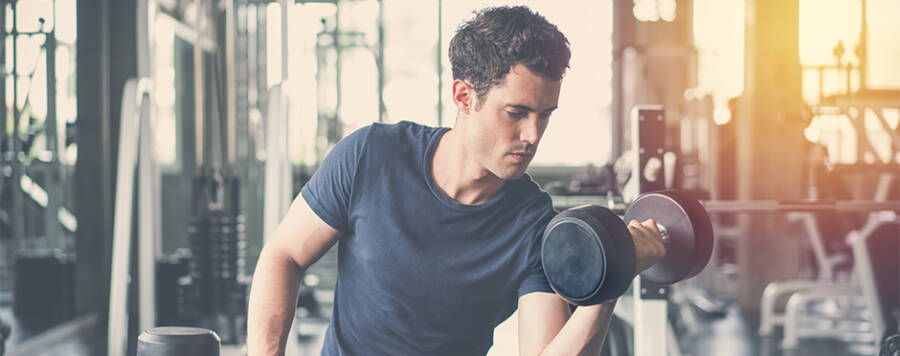Myth #1: Soreness Is The Mark Of A Good Workout
This is an especially harmful attitude to have when exercising. Sure, soreness can happen, especially when starting a new routine or exercise, but it is not something that should be consistent. When it comes to building muscle, soreness can be a good indication that you’re working the right muscle group, but it doesn’t have to be present to mark a good workout. In fact, prolonged soreness can be a marker of muscle damage that is too great to recover from productively, i.e. you don’t build any new muscle.
Myth #2: You Can Out-Exercise A Bad Diet
Exercise can burn a decent number of calories based on the modality, but ultimately not as much as you think. Squats, for example, will be roughly 10-15 calories in a minute. Running typically equates to burning 100 calories per mile, but that’s a total from base metabolic rate and activity. So, if you were to consume an extra 1000 calories in a day above your typical baseline, that equates to running 10 miles to “burn” that extra food off. This would not be a sustainable practice in the long run. Diets are all about calories consumed vs calories burned, and the easiest way to adjust that equation for your goal may be through food.
Myth #3: You Need To Spend A Long Time In The Gym For Success
Long hours spent in the gym are not necessary for improved health. There is a concept called Exercise Snacks 1,2 which consist of high bursts of intense movements (burpees, pushups) that usually last around a minute and are done at a high frequency throughout the day (3-8 times per day). You will be working very hard, but the duration is short so if you’re pressed for time, you can get these in and reap some of the great health benefits of exercise. While longer exercise times demonstrate a greater magnitude of effect, these snacks can work in a pinch.
Myth #4: Lifting Weights Will Make You Bulky
Social media has warped people’s perception of body image, and what it looks like to have muscle. The truth is, it is very hard to build muscle in the sense that it takes a lot of work and is a long process. It can be a worthwhile endeavor, but most people with normal hormone levels will not get bulky from lifting weights, and you should not let this myth prevent you from building muscle and strength, both of which are shown to decrease all-cause mortality risk as you age.
With these myths in mind, it’s time to go out and conquer your fitness routine, whatever that may look like for you and your particular health and wellness goals. Remember that our team is here to help you stay active and avoid pain and injury! If you have questions or are experiencing aches and pains, reach out to a location near you to schedule a free assessment. Free assessments are available in-person and virtually through our telehealth platform.
*Per federal guidelines, beneficiaries of plans such as Medicare, Medicaid, Tricare, VHA and other federally funded plans are not eligible for free assessments.
The Athletico blog is an educational resource written by Athletico employees. Athletico bloggers are licensed professionals who abide by the code of ethics outlined by their respective professional associations. The content published in blog posts represents the opinion of the individual author based on their expertise and experience. The content provided in this blog is for informational purposes only, does not constitute medical advice and should not be relied on for making personal health decisions.
References:
1. Huang CH, Yen M. Hu Li Za Zhi. 2023;70(2):78-83. doi:10.6224/JN.202304_70(2).10
2. Islam H, Gibala MJ, Little JP. Exercise Snacks: A Novel Strategy to Improve Cardiometabolic Health. Exerc Sport Sci Rev. 2022;50(1):31-37. doi:10.1249/JES.0000000000000275
Tanner Neuberger is a Doctor of Physical Therapy and Certified Manual Therapist who specializes in Orthopedics, Sports Rehabilitation, Dry Needling, and Blood Flow Restriction. Tanner graduated from St. Ambrose University in 2016 and was a collegiate athlete in undergrad at the University of Texas of the Permian Basin. Tanner uses his extensive knowledge of manual therapies and strength and conditioning to get his patients back on track and performing better than ever.

 width="900"
height="356"
>
width="900"
height="356"
>
